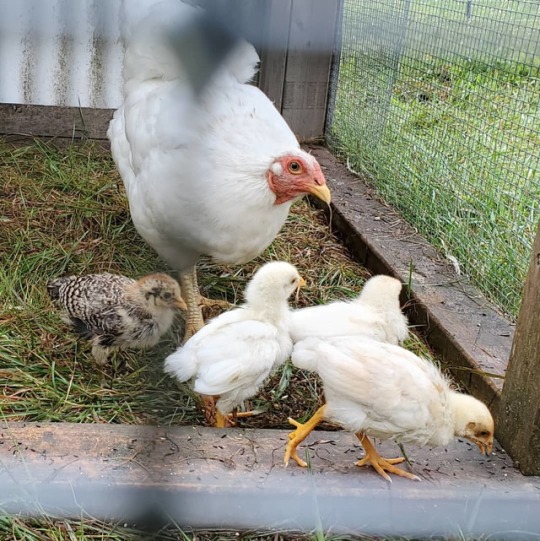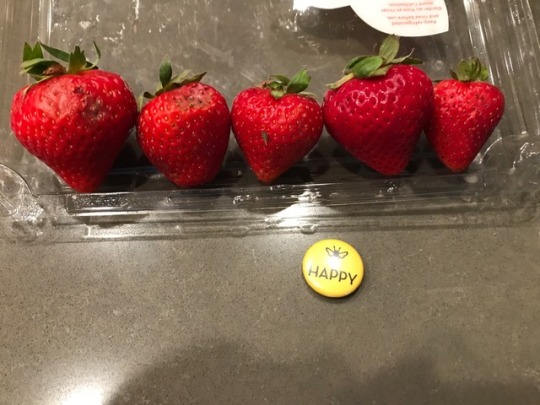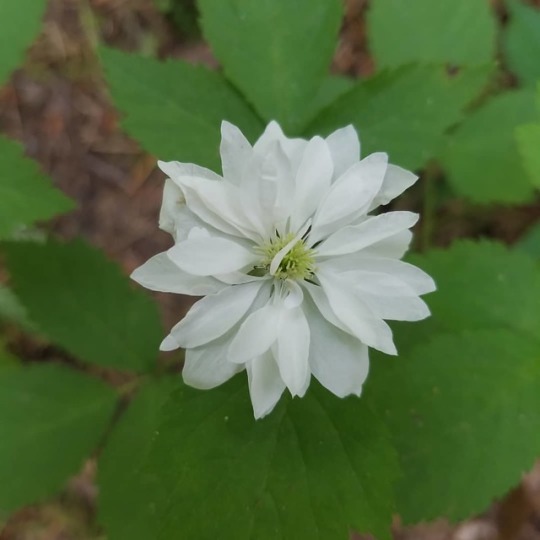#geneticvariants
Video
youtube
Did you know… 1 in 20 people have…
#youtube#shorts#HumanRibs Anatomy ExtraRib RibVariation SkeletalSystem BoneStructure ThoracicCage RibCage GeneticVariation Mutation DevelopmentalAnomaly Emb
0 notes
Text
0 notes
Text
"Unraveling Genetic Mysteries: The Impact of Molecular Cytogenetics 🧬"
Molecular cytogenetics is revolutionizing our understanding of genetics, offering insights into chromosomal structures and functions at the molecular level.
Through techniques like fluorescence in situ hybridization (FISH), comparative genomic hybridization (CGH), and array-based methodologies, researchers can detect chromosomal aberrations and genetic variations with unprecedented precision. This invaluable tool is transforming diagnostics, guiding treatment decisions, and unraveling the complexities of genetic diseases. As we delve deeper into the realm of molecular cytogenetics, we unlock the potential to personalize medicine and improve patient outcomes. #MolecularCytogenetics #Genetics #ChromosomalAberrations #FluorescenceInSituHybridization #ComparativeGenomicHybridization #GeneticVariations #Diagnostics #PrecisionMedicine #MedicalResearch #GeneticDiseases #ChromosomalStructures #GeneticTesting #HealthcareInnovation #PatientOutcomes #GenomicTechnology
0 notes
Text
Postdoctoral Associate, Department of Genetics, Reilly Lab
Yale University
Interested in how #GeneticVariation impacts #HumanHealth & #evolution? Looking for a post-doc position? Come join the Reilly Lab at #yale!
See the full job description on jobRxiv: https://jobrxiv.org/job/yale-university-27778-postdoctoral-associate-department-of-genetics-reilly-lab/?feed_id=42626
#ScienceJobs #hiring #research #genomics, #HumanEvolution #ecoevo #MachineLearning #PopulationGenetics #DataScience #biochemistry
New Haven #UnitedStatesUS #PostdoctoralFellow
0 notes
Photo

WE ARE LIVING LONGER BUT NOT BETTER ‼️ Let me help you: 💥REDUCE YOUR OXIDATIVE STRESS 💥REBUILD CELL AND DNA DAMAGE 💥SUPPORT GENETIC VARIANTS 💥SUPPORT NUTRITIONAL DEFICENCIES 💥SLOW DOWN THE AGING PROCESS 💥EXTEND TELOMERES 💥REDUCE RISK OF DISEASE AND MORE.... it's not as expensive as you would think and you will live longer with a better quality of life 💞 #uforiascience #dnahealth #genehealth #nrf1 #nrf2 #nad #cbd #naturalhealing #biohacker #nutrigenomics #oxidativestress #geneticvariants #nutritionaldeficencies #aging #disease #telomeres #dnadamage #cellrepair #healingfromwithin #tiptuesday (at My Office) https://www.instagram.com/p/B37A_ldnC0u/?igshid=vyuqft6rlmzd
#uforiascience#dnahealth#genehealth#nrf1#nrf2#nad#cbd#naturalhealing#biohacker#nutrigenomics#oxidativestress#geneticvariants#nutritionaldeficencies#aging#disease#telomeres#dnadamage#cellrepair#healingfromwithin#tiptuesday
0 notes
Link
Human immunodeficiency virus (HIV) could be an infection by this lentivirus from the family Retroviridae are characterised by an extended well amount once host immune defenses control the initial infection.
HIV is a blood-borne illness transmitted via contact with the blood of an infected individual: through
Blood transfusions
Needle-sharing
Sexual contact
From mother to kid throughout vaginal birth
Breast-feeding.
METHODS OF DISEASE TRANSMISSION BY MOSQUITOESThere are 2 totally different processes which may end in vector-transmission, which areThe primary is simple mechanical transmission of a microorganism by arthropods. This happens once the arthropod acts exclusively as a way of physical transport of infective agent particles between hosts (e.g., having viral particles in and around mouthparts). The second is biological transmission. This happens when the virus replicates at intervals the arthropod vector throughout the fundamental quantity between feeding events. on the basis of experimental proof and likelihood estimates, it's been complete that the probability of mechanical or biological transmission of HIV by insects is nearly nonexistent.
0 notes
Photo

Momma, one doesn't look like the rest. #geneticvariability #chicks #pasturedchicks #paturedchickens #chickens @parttimepermies https://www.instagram.com/p/B1V_yefgayG/?igshid=xdut22zqg3ju
0 notes
Photo

Genetic variation refers to different traits and aspects characteristic to certain organisms within a species. This variation is often the result of genetic mutation, and allows for natural selection to take place. Within a strawberry population, the size, color, and fruit shape vary from organism to organism. The more “desirable” and fit strawberries will survive their extent of growth, and most likely parent new strawberries in upcoming seasons.
0 notes
Text
The effects of cultivar and climate zone on phytochemical components of walnut (Juglans regia L.) @FoodEnergySec
Shutian Wu et al🔗https://t.co/VLE12cBbEH#GeneticVariation #Walnut #FoodSecurity #FoodEnergySecurity #AABPublications pic.twitter.com/Xa5uR4x24e
— Food and Energy Security (@FoodEnergySec) February 17, 2020
0 notes
Video
Genetic Mutations Crash Course By Inbreeding
1. Albinism
People from all ethnic backgrounds can give birth to children who have albinism. Those who live with the condition have an absence of melanin in their skin, hair, and eyes. As a result, their hair can be pale blond to white, their eyes are usually a fair blue, and they often have vision problems. Why does it happen? Well, one possibility is inbreeding. Because albinism is an autosomal recessive condition, people who are related and intermarry or mate are more inclined to give birth to children with the disease.
2. Microcephaly
During the days of traveling circuses, people with microcephaly were often put on display as freaks, just like the famous “Schlitzie the Pinhead” was. So no, the condition is not at all new to the medical world, although it has been making headlines lately as the Zika virus has been giving pregnant women quite a scare in the last few years. When women are infected by the virus while with child, their babies become susceptible to being affected by the disease. The head of the child would then become under-grown, the brain not forming fully either.
3. Fused Limbs
Movies and television shows like to depict children of incest as mongrels with eleven fingers and disfigured faces, but in reality, those are more uncommon traits. Surprisingly, however, children born with fused limbs are common. In such cases, fingers or toes are fully grown, but the skin and flesh around one or two of them are linked together. The condition is called polydactylism and can make parts of the body webbed or like one strange, alien-like unit.
4. The Habsburg Jaw
Having a long jaw doesn’t necessarily mean that you come from a family of inbreds, but it does seem to be a trait that the House of Habsburg couldn’t avoid. The noble family rose to power during the 1400s and reigned for 300 years, and like many royal families, they didn’t want to intermingle their bloodline with peasants. For that purpose, they married and had children with relatives in order to keep the wealth within the family. Unfortunately, as generations went on, physical attributes started to change, including a long, protruding lower jaw with a highly noticeable under bite.
5. Cleft Palate
A cleft palate is said to occur when the roof of the mouth improperly forms, thus causing the sinus passage to remain open. It’s easy to spot people with this condition because it looks as if they have an ill-formed upper lip that lifts into their noses. And while it may look as if it’s strictly a cosmetic issue, people with cleft palates have difficulty breathing, eating, swallowing, and sometimes speaking. This condition is said to form in the womb, and in places such as India or Kenya, where inbreeding runs rampant in small tribes, many babies are born with cleft palates.
6. Elongated Skull
Once thought to have come from the artistic imaginations of ancient Egyptians, elongated heads weren’t actually exaggerations. In fact, researchers now claim that the statues and busts showing elongated heads are accurate representations of the way the Egyptian royalty actually looked — their skulls developing that way as a result of years upon years of inbreeding. Ancient Egyptian royal bloodlines were riddled with incest as marriages between siblings and cousins were common.
7. Dwarfism
People with dwarfism don’t necessarily come from long lines of inbreeding, but when tribes and small villages where inbreeding was common were studied, there was a higher rate of little people being born within those groups. In fact, the Ellis-van Creveld syndrome — the more scientific name for dwarfism — has been found among people in isolated populations, such as the Amish who are settled in Lancaster, Pennsylvania. In the 1700s, children with dwarfism born into this community, often came out of their mother’s womb with teeth, cleft palates, misshapen wrists, heart defects, fused limbs, and missing fingernails.
#genetics #geneticdisorders #geneticcounseling #geneticmutation #mutantsgenetic #geneticvariation #geneticdiseases #mutantgenetic #geneticmutations #geneticdisorderslist #mutansgenetic #raregeneticdisorders #geneticdisorderdefinition #listofgeneticdisorders #geneticdiseaseslist #geneticmutationdefinition #whatisgeneticmutation #geneticproblems #geneticsyndromes #geneticabnormalities #GeneticMutationsInHumans #GeneticMutationsCrashCourse
https://youtu.be/jone4PUdkx4
0 notes
Text
Postdoctoral Associate, Department of Genetics, Reilly Lab
Yale University
Interested in how #GeneticVariation impacts #HumanHealth & #evolution? Looking for a post-doc position? Come join the Reilly Lab at #yale!
See the full job description on jobRxiv: https://jobrxiv.org/job/yale-university-27778-postdoctoral-associate-department-of-genetics-reilly-lab/?feed_id=40982
#ScienceJobs #hiring #research #genomics, #HumanEvolution #ecoevo #MachineLearning #PopulationGenetics #DataScience #biochemistry
New Haven #UnitedStatesUS #PostdoctoralFellow
0 notes
Photo

Dewberries are in bloom! And the interesting thing is that we have a number of plants that produce double blooms! Not surprising being that they are in the same family as roses. Just compare your typical wild rose varieties to the cultivated varieties. They have obviously selected for more complex blooms, but the genetic variation is there. Now, time to wait for the berries... #dewberries #geneticvariation #foragedfood #wildfood #foraging @parttimepermies https://www.instagram.com/p/Bylp4LbgaV9/?igshid=1ubz9gkpqhagt
0 notes
Photo

Dewberries are in bloom! And the interesting thing is that we have a number of plants that produce double blooms! Not surprising being that they are in the same family as roses. Just compare your typical wild rose varieties to the cultivated varieties. They have obviously selected for more complex blooms, but the genetic variation is there. Now, time to wait for the berries... #dewberries #geneticvariation #foragedfood #wildfood #foraging @parttimepermies https://www.instagram.com/p/BylpswEgGzs/?igshid=1fu5hk2ne77q2
0 notes
Video
Rare Genetic Disorders You Do Not know about
1. Humans Tail
This image is very thought provoking for a variety of reasons, and it is a reminder that we humans are indeed animals. We may have highly-developed brains, but at the end of the day, we’re just a bunch of savages who wear fancy clothes and drive nice cars. This image is definitely adultered, though because humans have since lost their ability to grow tails like their animal counterparts. This is called human vestigiality, and it has a lot to do with our genetic makeup but also with our evolutionary abilities.
2. Progeria — Ageing Backwards
Who remembers the amazing movie Benjamin Button? Brad Pitt and Tilda Swinton did an amazing job in this film and it received a handful of Academy Award nominations. But behind the icon movie, the ‘Benjamin Button’ disease is quite real and it’s called Progeria. People with the disease don’t live that long and usually, make it into their late teens or early twenties. Those who have the disease are usually unable to have children because their bodies are way too weak to reproduce.
3. Uner Tan Syndrome
“What is this syndrome?” You must be wondering, well it was discovered by a Turkish biologist named Uner Tan, which leads to the name of this syndrome. Individuals impacted by this disfiguring affliction walk on all four, kind of like a gorilla. They also have trouble speaking and have some form of a mental disability. It’s for this reason that these individuals with the syndrome need constant care, and can’t take care of themselves because they’re constantly at risk of getting injured.
4. Hypertrichosis
Humans no longer need body hair, and that’s a proven fact. So the reason why we have to go get waxed at the salon is for evolutionary reasons. Back in the day, human hair kept us warm and insulated the warmest parts of our bodies. But sometimes people have too much body hair that they can’t control. This is called Hypertrichosis, or Ambras syndrome. Individuals who suffer from this syndrome typically look like those in the picture above, with tons of hair primarily on their face and the rest of their bodies.
5. Epidermodysplasia
This disease literally looks like something out of a horror movie. Epidermodysplasia is an extremely rare skin condition that causes lesions and disfigurement. Those who have Epidermodysplasia usually have a weakened immune system and are susceptible to an array of illnesses, particularly the human papillomavirus (HPV). When someone who has this skin condition gets infected with HPV, it causes their skin to grow scales along with painful papules on their appendages.
6. Lesch–Nyhan Syndrome
Have you ever heard of the disease called gout? It usually affects older men who eat processed meats, causing their joints to swell, rendering them completely immobile at certain times. Well, Lesch-Nyhan (LNS) syndrome is very similar, but it only impacts children and teens. The syndrome causes a buildup of fluid and crystallized matter around their joints, causing extreme discomfort and pain. This is because they have a deficiency when it comes to the enzyme called HGPRT.
7. Ectrodactyly
This entry is a little startling, and we can understand if you feel slightly uncomfortable after looking at the image above. Essentially, people who are born with split hands (also known as cleft hands) are born with ectrodactyly. This is caused when there’s a genetic mishap when the baby is growing inside the mother’s womb, leading to the child to be born with strange appendages.
#genetics #geneticdisorders #geneticcounseling #geneticmutation #mutantsgenetic #geneticvariation #geneticdiseases #mutantgenetic #geneticmutations #geneticdisorderslist #mutansgenetic #raregeneticdisorders #geneticdisorderdefinition #listofgeneticdisorders #geneticdiseaseslist #geneticmutationdefinition #whatisgeneticmutation #geneticproblems #geneticsyndromes #geneticabnormalities
https://youtu.be/A2A469QJQP0
0 notes